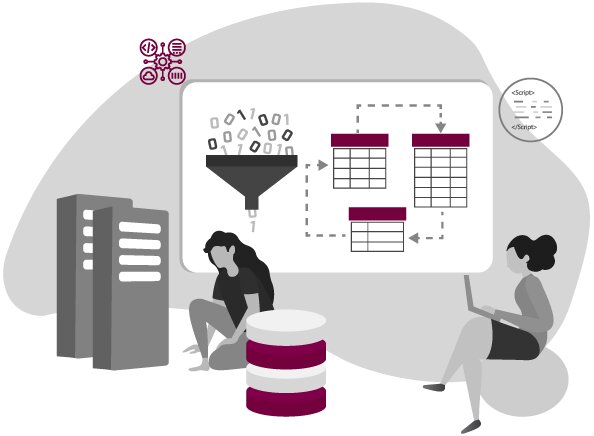10 best Practices for Data Science Project
Some practices should be followed for smooth functioning of the project.This article will guide you how to make your data science project a success.
Data science is the process of generating insights from the available data. Data science projects can be very challenging, as they often require researchers to use advanced methods, integrate different data sources, and make complex calculations. To help you minimize these challenges while completing your project, we’ve compiled a list of ten best practices for data science projects. Following these 10 best practices for data science projects is essential to ensure that your project runs smoothly and meets your expectations.
Table of contents
1. Create an effective data science team
2. Identifying the problem statement
5. Data collection, Data exploration, and data cleaning
8. Action plan
10.Be ready for improvement in the project in future



Best-suited Data Science for Business courses for you
Learn Data Science for Business with these high-rated online courses
1. Create an effective data science team
To create an effective data science team. It is necessary to identify the skills and expertise necessary for the project. This can be done by gathering information on the experience and skills of current data science professionals, as well as it is essential to understand the goal of the project, and the resources necessary for the project.
2. Identifying the problem statement
In order to identify the problem statement, it is first important to understand the goal of the data science project. Once the goal is understood, it becomes easier to find the right data sources and determine how the data should be analyzed.
3. Select appropriate tools
Plan which tools you need for visualization, coding, or both. Visual tools may be a better choice if your team is new or is less experienced, but experienced data scientists may prefer working in a language such as Python. Things to plan are
- Plan the infrastructure that fits your business strategy.
- Plan the amount and speed of data that needs to be scaled.
- The processing power that you need. Think about the right
- Methodologies and algorithms for what you want to achieve.
4. Select appropriate metrics
Choosing the right metrics to link your data science results to your business goals is essential.
For example, the performance of predictive algorithms is often measured using Root-mean-squared error (RMSE). Still, for some relevant business goals, the metric for log-squared root-mean-square error may give better results.
5. Data collection, Data exploration, and data cleaning
a. Data collection
A data scientist requires a variety of data collection tools in order to achieve accurate and reliable data. It is essential to use quality data collection methods and the appropriate data exploration and analysis tools for the task at hand. The libraries used for data collection are Beautiful Soup, Selenium, Scrapy, Tweepy, and PYSQL.
b. Data exploration
Once data has been collected, it should be analyzed using the appropriate data exploration and analysis tools. These tools can help to identify trends and patterns in the data, as well as aid in the understanding of the data. It is important to choose the right tool/library for the task at hand. The libraries used for data exploration are Matplotlib, Plotly, Seaborne, Autoviz, YellowBrick, Folium, and Sweetviz.
For saving time you can do automated data exploratory analysis using the following libraries
- Dtale
- pandas profiling
- Sweetviz
- autoviz
NOTE: Use charts and graphs to present your findings in an interesting and understandable way.
c. Data cleaning
Organizational systems store large amounts of data over the years. Most of these have never been used in any analysis and may be buggy. There are different types of such data. Incorrectly entered manually manipulated data, missing data, etc. Incorrect data can adversely affect the results expected from the overall exercise. The libraries used for data cleaning are Pandas, Dora, Arrow, Scrubadub, Missingno, Spacy, NLTK, Cloudingo, and RingLead.
6. Creating machine learning models
There are many different machine learning algorithms. Some of the critical machine learning algorithms are listed below-
- Linear regression–Linear regression is the most widely used supervised learning algorithm. It tries to find a relationship between an input and output variable by solving a regression equation.
- Logistic Regression–Logistic regression is a statistical method for predicting the outcome of dependent variables based on past observations. This type of regression analysis is a commonly used algorithm for solving binary classification problems.
- ANN (ensemble learning) uses a neural network to create learned models. After learning from the initial inputs and their relationships, it infers unseen relationships on unseen data.
- Kmeans–Used for clustering problems.
- KNN (K- Nearest Neighbors) Algorithm- Used for classification and regression problems.
- Decision Tree– The population is divided into two or more homogenous sets. This is done based on the most important characteristics/independent variables to create as many unique groups as feasible.
- Random forest– Frequently employed in classification and regression issues. It constructs decision trees on various samples and uses their majority vote for classification and regression.
Also, explore: What is a Data Scientist?
Also explore: About Data Science
7. Use an agile approach
It is a project management way in which the project s divided into different phases. Agile software development is based on making continuous and concerted efforts to improve the process within a software development project. It emphasizes responding to feedback and customer needs on time.
8. Action plan
The real value of data science is not to reveal interesting insights, but to act on those discoveries. To ensure success, organizations need to have a clear action plan that outlines the next steps these insights need to inform and who are the key drivers. Insights need to be packaged, answer original business questions, and presented through clear visualizations that give a clear overview of the data lineage so that stakeholders can implement action plans.
9. Communicating the results
Sometimes the data scientist has produced results but could not communicate those results/findings in front of stakeholders. But that is also very important. Document your findings and share them with others who may be interested in what you have done. Make sure that you always take steps to ensure the quality of your data and project results.
10. Be ready for improvement in the project in future
Be willing to make changes as needed, and adapt your project plan as the data becomes available. There could be changes in requirements from the user side or there could be errors coming while using the software. So the software developer should be ready to fix that whenever required.
Conclusion
Following these 10 best practices for data science projects outlined in this essay will help you achieve success with your data science projects. By following these tips, you will ensure that your data is of high quality, reporting is complete and accurate, and that all team members are on the same page.
If you liked this article, hit the like button below and share it with other data science aspirants or professionals.
This is a collection of insightful articles from domain experts in the fields of Cloud Computing, DevOps, AWS, Data Science, Machine Learning, AI, and Natural Language Processing. The range of topics caters to upski... Read Full Bio





